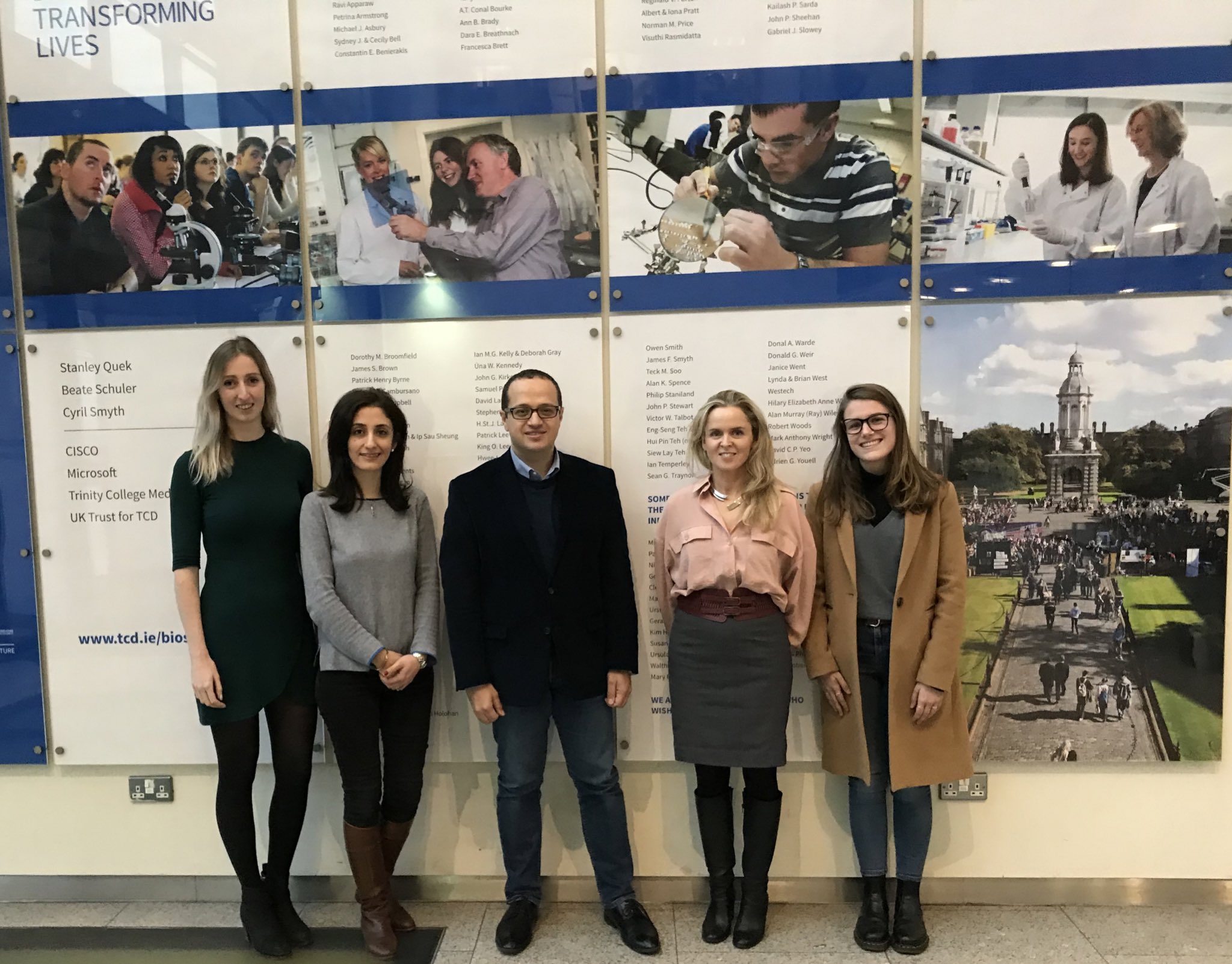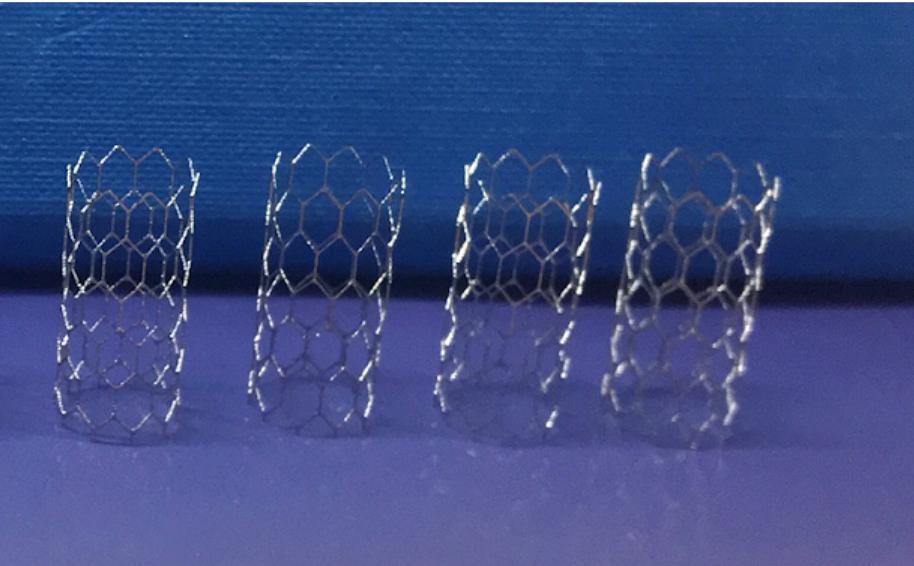The use of stents for treating children with congenital heart disease is challenging. This is one of the reasons why the annual number of stent procedures in these cases remains relatively small and even in the most experienced hands, inserting a stent into a child’s narrow blood vessel is a serious, risky, and invasive procedure. This is especially true because stents are predominantly manufactured for adults and need certain modifications for pediatric surgeons to utilize them, limiting their safety and effectiveness.
“The problem is that usually, the aortas that surgeons are dealing with are a bit too small for the standard self-expanding stents used for adults. If stents were designed specifically for a child’s anatomy, then surgeons would be more inclined to apply them to restore the flow of blood through blocked or narrow vessels,” said Caitríona Lally, professor of bioengineering in the Department of Mechanical and Manufacturing Engineering and principal investigator in the Trinity Centre for Biomedical Engineering at Trinity College Dublin, Ireland, during an interview with 3DPrint.com.
Lally works with Moataz Attallah, an expert in advanced metal manufacturing processes and professor of advanced materials processing at the School of Metallurgy and Materials at the University of Birmingham, U.K. Their collaborative research employs additive manufacturing (AM) to develop a technique for producing customized cardiovascular nitinol stents for pediatric patients. While Attallah is gaining ground with the real additive manufacturing and material characterization, Lally works on the medical device design, as well as understanding its mechanical strength and integrity.
Focusing on a project for 3D printing patient-specific nitinol stents for pediatric patients (3DP4Paeds), funded through the National Children’s Research Centre Innovation Award program, Lally and Attallah hope to advance the design and manufacture of bespoke stents that can address the complexities and uniqueness of structural defects in children with heart deformities. Additionally, Attallah shared initial results from simultaneous ongoing research on smart peripheral nitinol stents funded by UK’s Engineering and Physical Sciences Research Council (EPSRC), in the joint collaboration with Lally.
Using medical imaging techniques to map the specific anatomy of a patient’s heart and 3D metal printing to produce a stent that matches the shape of the patient’s structural defect, results in a medical device that would limit the need for adult stent modification and ensure an optimum long-term outcome by reducing the risk of tissue damage by the stent.

From left to right: Orla McGee, Parastoo Jamshidi, Moataz Attallah, Tríona Lally, and Celia Hughes (Credit: Trinity College Dublin/University of Birmingham)
To understand the rationale behind 3D printing of nitinol stents, Attallah suggests it is important to grasp the limitations of the conventional process used to develop stents, something he described as a very “time consuming and expensive undertaking.” Stents are metal mesh devices that are usually manufactured by direct laser cutting from a single very large metal tube.
“If you think about the number of steps and processes needed to make a very flexible and bendy stent structure, you are probably losing around 95% of the material, and if the stent is made of Nitinol, this becomes a very expensive process as this particular nickel-based metal alloy has a very high cost,” explained Attallah. “But most of all, this process bypasses the customization option, which is critical for pediatric stents. We know that making stents with additive manufacturing is geared towards patient-specific medicine, which is the healthcare trend of the future and can lead to more successful outcomes during stent implantation surgeries.”
Every year, approximately two million patients have stents implanted into a diseased artery of the heart, most frequently adults. Lally described that because the number of stents needed for children is very few, stent-manufacturers don’t typically want to produce them, chiefly because it’s expensive.
In the United States, congenital heart defects affect nearly 1 percent of births every year and, in the U.K., up to eight in every 1,000 babies are born with the condition. Moreover, Lally described the stents being developed at Trinity as “ideal for a rare congenital condition known as aortic coarctation, or narrowing of the aorta, that is even rarer than the general congenital heart defects,” affecting only one in 10,000 infants. These numbers are clearly not high enough for top vendors of the global vascular stent market to warrant having bespoke devices laser cut and manufactured in the traditional way.
“Pediatric surgeons are often faced with products that are not well designed for the purpose that they use them for and they end up having to trim adult stents in surgery to suit infants. As a result, they don’t get as good outcomes from these surgeries, as they know they would if they had a better product to work with,” Lally claimed. “Moreover, an ideal patient-specific stent implanted in small children would follow the natural growth of the vessel, avoiding further operations and extending the infants life expentancy.”
Consequently, the researchers chose to work on additively manufactured nitinol stents flexible enough to conform to a child’s vessel, with the added ability to follow the natural growth of that vessel throughout their lifetime. Attallah is one of the few researchers around the world with experience 3D printing nitinol, working with the material since 2015. Until now, the duo has successfully printed prototype nitinol stents and tested them in their respective labs.
Made out of titanium and nickel, nitinol is a shape memory alloy with superelasticity and very suitable for use in medical devices. Unlike other stents made of stainless steel that show a limited degree of elasticity, the self-expanding properties of nitinol stents offer a lot of promise for pediatric patients that require stents to follow the natural growth of vessels.
Attallah revealed that “trying to customize a stent using traditional manufacturing methods can take a long time, but with additive manufacturing, the process can be done much faster. Until now, there haven’t been any 3D-printed customized stents in clinical applications, but we are sure that once they go from bench to bedside, they will be revolutionary, as the application is likely to have potential beyond cardiac use. But for now, we are still in an early development phase.”
According to Lally and Attallah, getting to the clinical stage in the pediatric field can take up to three more years, while custom AM nitinol stents for adults are expected to take much longer. That is because the immediate benefits of patient-specific stents can be significantly higher in children, and there is a pressing need to improve mechanisms to effectively produce stents for infants.
“In the pediatric area you can say that 3D printing can address things that other manufacturing techniques cannot,” said Lally.
3D printing also adds flexibility to the design. The two researchers are creating complex products with high geometric accuracy that can be tapered to make sure that they take into account very specific patient anatomy without blocking any of the critical side branches or smaller arteries.
“Unlike a lot of the stenting design, which has been restricted by the fact that it has to be made into a cylinder and laser cut, AM offers the design freedom to produce patient-specific parts accounting for bifurcations, for example,” said Lally. “Most of these stents would go into vessels that have lots of branches that should not be obstructed, so implanting a standard stent that obstructs branching vessels can cause more harm than good. These new medical devices will be printed to fit the individual child’s anatomy and will, therefore, be more likely to provide a better clinical outcome in the long-term.”
The designs for 3D-printed nitinol stents are being produced at Birmingham University using GE Additive’s Concept Laser metal 3D printers, while Trinity College employs SLM printers for the job.
Addressing the limitations of traditionally manufactured stents using AM could benefit patients not only during the operation and shortly thereafter, but also in the long run. Attallah explains that, unfortunately, many standardized stents can fail after a procedure, and when that happens, surgeons have to ‘fish them out’ through a very complex procedure.
“We needed to address the radiopacity of our stents, that is, the stent must be radio-opaque in order to be visible for doctors. So, one of the first developments in the project was printing nitinol stents that contained up to 10 percent precious metals used as marker material, which help the medical device be seen under X-ray, helping surgeons know exactly where the stent is so that it can be implanted and removed with greater ease,” said Attallah.
But that’s not the only issue with standardized stents. According to Lally, there can also be a “biological response from the placement of the device,” with excessive cell growth that can re-block the vessel resulting in restenosis.
“This is usually related to the load level placed on the tissue during stenting, which can lead to damages and tears and a high risk of restenosis. Patient-specific modeling, software tools, and 3D printing help design a stent best suited to a particular geometry, ensuring that surgeons only expand the areas that need to be expanded, avoiding risks of re-narrowing of the valves after stent implantation” said Lally.
As their research advances, Attallah and Lally hope to see the benefits of customized stent technology as personalized treatments that will reduce costs going forward
“The current COVID-19 crisis highlighted the role of distributed manufacturing. Looking onward I envision centralized facilities that will come up with the design for custom stents based on data that hospitals send them. Once the designs are proven and a procedure is developed, the stent will be deployed to the hospital, leading to a more robust process for stent insertion,” concluded Attallah. “Customization processes to enable manufacturing stents that match the biological and anatomical features of a patient will be revolutionary, and that’s what we are aiming for.”
Subscribe to Our Email Newsletter
Stay up-to-date on all the latest news from the 3D printing industry and receive information and offers from third party vendors.
You May Also Like
Profiling a Construction 3D Printing Pioneer: US Army Corps of Engineers’ Megan Kreiger
The world of construction 3D printing is still so new that the true experts can probably be counted on two hands. Among them is Megan Kreiger, Portfolio Manager of Additive...
US Army Corps of Engineers Taps Lincoln Electric & Eaton for Largest 3D Printed US Civil Works Part
The Soo Locks sit on the US-Canadian border, enabling maritime travel between Lake Superior and Lake Huron, from which ships can reach the rest of the Great Lakes. Crafts carrying...
Construction 3D Printing CEO Reflects on Being Female in Construction
Natalie Wadley, CEO of ChangeMaker3D, could hear the words of her daughter sitting next to her resounding in her head. “Mum, MUM, you’ve won!” Wadley had just won the prestigious...
1Print to Commercialize 3D Printed Coastal Resilience Solutions
1Print, a company that specializes in deploying additive construction (AC) for infrastructure projects, has entered an agreement with the University of Miami (UM) to accelerate commercialization of the SEAHIVE shoreline...































